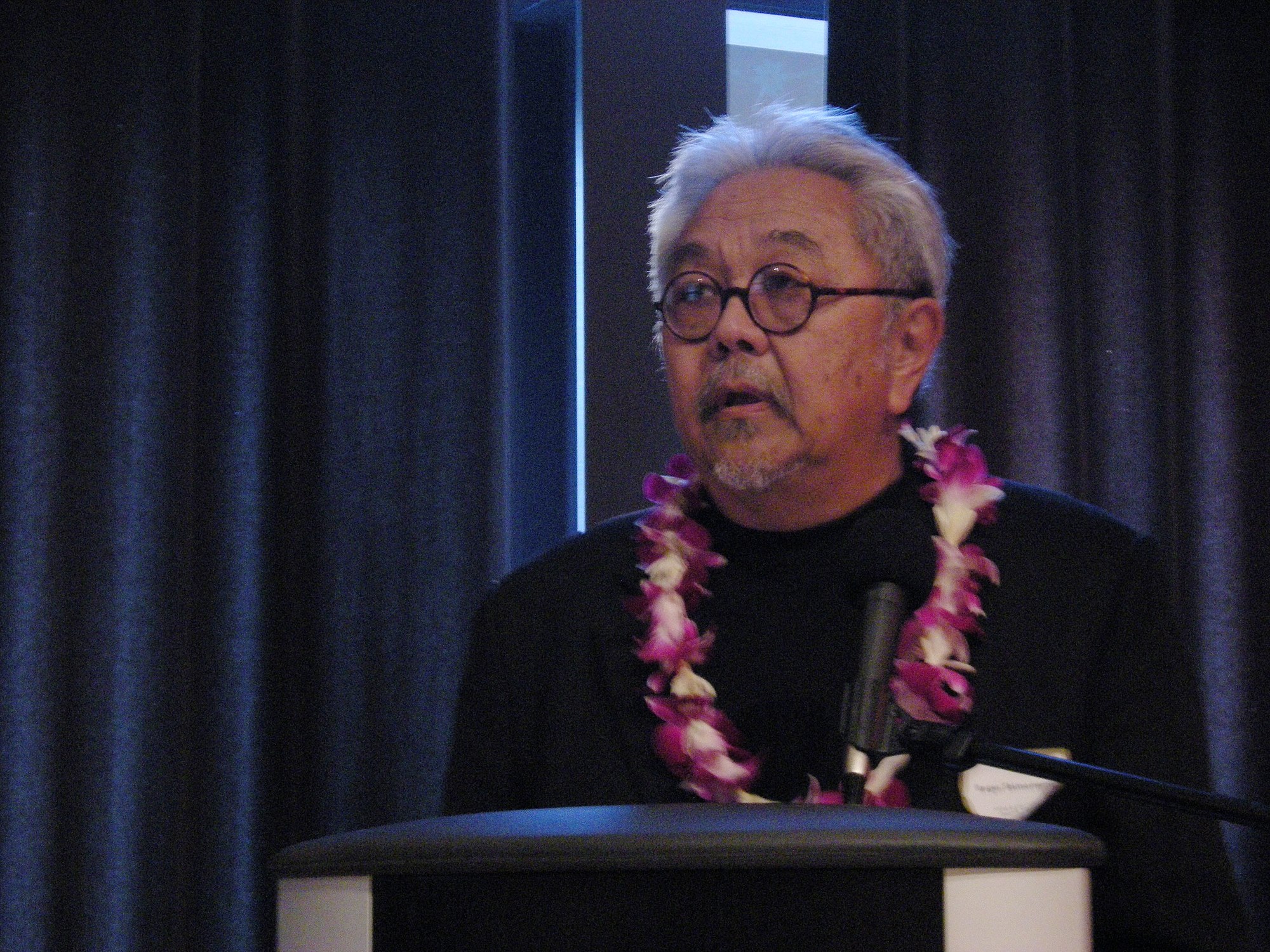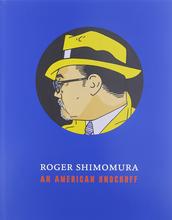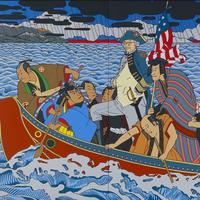More about Roger Shimomura
- All
- Info
- Shop
Works by Roger Shimomura

Contributor
Roger Shimomura is a Pop artist, performance artist, and hoarder extraordinaire.
He was born in Seattle, Washington in 1939 to a pharmacist and a homemaker. His grandparents had emigrated from Japan in the early 1900s, making Roger a third generation Japanese American. His grandmother, Toku, to whom he was very close, was a midwife and helped deliver over 1,000 babies in the Pacific Northwest, Roger being the last one. After the bombing of Pearl Harbor in 1941, Roger and his family were taken, along with 95% of the Japanese American population in the United States, to internment camps.
They were shipped off to the Minidoka camp in Idaho, where they stayed for around two years. While interned, Shimomura’s mother gave birth to a daughter who died at the age of two of meningitis. Much of Shimomura’s work is concerned with this time in his life and the treatment of Japanese people in America in general, which was, as you would expect, very bad. When released, Shimomura and his family moved to Chicago, where his father got a pharmacy job, but eventually returned to Seattle. Shimomura attended University of Washington, where he studied graphic design and was essentially forced by his family to join ROTC (Reserve Officers’ Training Corps). He despised it but actually did very well. From 1962-1964 he was stationed in Fort Lewis, Washington and in Korea as an artillery officer in the U.S. Army. After his service, Shimomura started taking painting classes at the University of Washington but transferred to Syracuse, where his artistry truly blossomed. He earned his MFA and promptly accepted a teaching job at the University of Kansas, where he taught until 2004.
The mindset in Kansas, wasn’t quite the same at the mindset in New York and Shimomura faced some real stereotyping. He remembers an interaction with a man at an estate auction, where he would grow his collection of collections (which we’ll revisit later). The man asked Shimomura how he spoke English so well and where he was from. Shimomura replied, that he was from Seattle. The man then said “No, where are your parents from?” to which Shimomura replied that his mother was born in Idaho and his father was born in Seattle. Finally the man asked what his ancestry was and what he did and Shimomura replied that he was Japanese American and taught painting at KU. The man replied, “Well Konichiwa! The little lady and I lived in Japan and we used to buy them pictures of Geeshee (meaning geisha) girls wearing them kimonos. Do you do pictures like that?” Shimomura walked away.
This along with many other interactions have inspired Shimomura’s work. He collects racist paraphernalia made during World War II –toys, salt and pepper shakers, buttons, etc– and uses them in his art. He claims not to be a hoarder though, because his collections are perfectly organized. Another huge influence is the diary of his grandmother from the time she came to America to the day she died. These influences on his work have made Shimomura a star. He now has works in over 90 museums. You go ,Roger!
Sources
- An American Diary: Artist Talk With Roger Shimomura. Washington, D.C.: Smithsonian American Art Museum, 2015. video.
- Facing Stereotypes - Roger Shimomura. Washington, D.C.: Densho Encyclopedia, 2015. Video.
- Kimmelman, Michael. "Review/Art; Yoko Ono On Her Own, Storming The Barricades." Nytimes.com. N.p., 1989. Web. 1 May 2018.
- Matsumoto, Nancy. “Roger Shimomura.” Roger Shimomura | Densho Encyclopedia, Densho Encyclopedia, 2018, encyclopedia.densho.org/Roger_Shimomura/.
- Sutton, Rebecca. "Art Talk With Roger Shimomura." NEA. N.p., 2017. Web. 1 May 2018.
- Upchurch, Michael. "‘Yellow Terror’ Art Collection: Satire Both Bright And Bitter." The Seattle Times. N.p., 2009. Web. 1 May 2018.
Featured Content
Here is what Wikipedia says about Roger Shimomura
Roger Shimomura (born Roger Yutaka Shimomura in 1939 in Seattle) is an American artist and a retired professor at the University of Kansas, having taught there from 1969 to 2004. His art, showcased across the United States, Japan, Canada, Mexico, and Israel, often combines American popular culture, traditional Asian tropes, and stereotypical racial imagery to provoke thought and debate on issues of identity and social perception.
Check out the full Wikipedia article about Roger Shimomura












